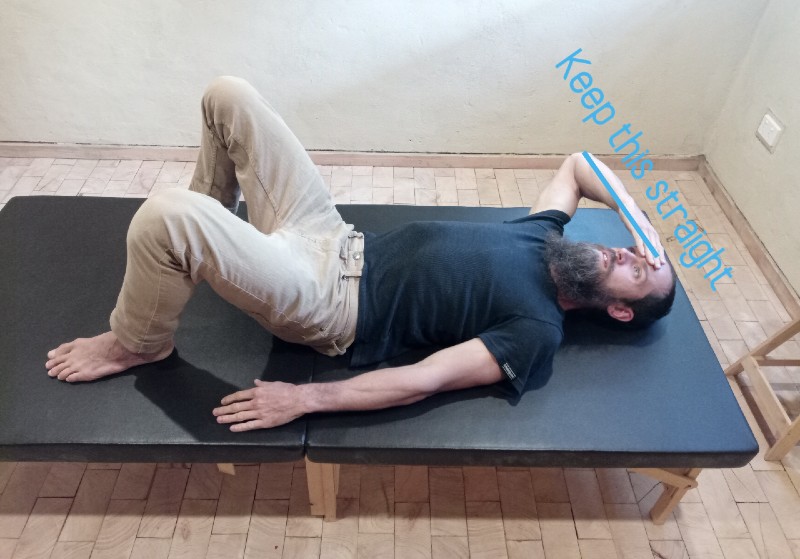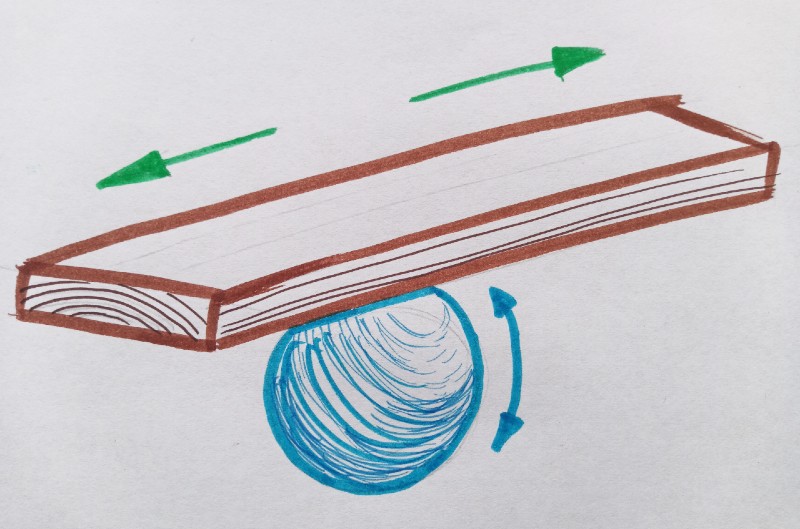Feldenkrais Exercises For Neck Pain
I remember a few years ago I got a little too excited when doing some exercise. I was doing chin ups on a bar and I did way more than what my body was used to. I ended up with a sore neck that lasted nearly a week. It was the most frustrating thing. I couldn't turn my head without wincing in pain and people kept on commenting that I looked as white as a ghost.
This was prior to my Feldenkrais training so I didn't really know how to deal with my tension effectively. I was using trigger point massage which was great for providing temporary relief, but it didn't last for long. The pain would come back within half an hour or so.
What I really needed to know was how to release all the muscles in my upper back. The ones which had gotten tight from doing those chin-ups.
If I was in the same situation now I would have a different strategy. I would use a Feldenkrais approach to re-educate the movement patterns of my neck, upper back and thoracic spine.
I assume if you're reading this page it's because you've got neck pain of some kind. If that's the case then you're in luck because I am going to share with you some simple feldenkrais movements which can help with neck pain.
These movements will help you release tension from your neck, back and shoulders. They will also give you more awareness about how this area of your body functions. I've had people do these movements before and their neck pain has disappeared permanently within 10 short minutes.
I've even had someone with multiple-years-long chronic neck pain let it go using these movements over a period of a few days.
Now I'm not saying that will happen for everyone. If you've been experiencing chronic neck pain for years and years I don't expect you'll be able to "solve" that problem quickly. You will have some strong neurological patterning which keeps those habits of pain in place. However, it is likely that you will feel some improvement... and if you're moving in that direction, that's a great thing. Chronic pain can take some work and some practice to get out of.
Feldenkrais movements are a fantastic step in the right direction.
Here are the movements/exercises for neck pain
Before you begin:
Find somewhere to lie down on. A yoga mat, blankets or a carpet is good to use.Take off your glasses if you wear any.
Guidelines:
Number 1 priority here is your comfort. Do whatever you can to stay in a range of movement that doesn't trigger your pain. Even if the movements are less than 1 cm long that is okay. In fact, if 1cm feels painful, then just do the movement in your imagination - it will have the same effect. This works because the same motor patterns are fired in your brain whether you're doing the movement or just imagining it.
Rest often. If you feel fatigued from anything just take a break. If you get bored, take a moment to stop and come back to it fresh. The important thing here is that you're paying attention to how it feels. This is what's going to create the changes in your system which will dissolve your neck pain.
Move slowly. I mean really slow. I would aim to be doing one complete movement from start to finish and having it take anywhere between 3-10 seconds. Many people will habitually move much faster completing it in 1/2 a second flat. Trust me, move slowly, you'll make MUCH faster progress.
The movements:
Lie on your back in the position shown with your right hand on your forehead.

Think of a line from your elbow to your finger tips and aim to keep this line as straight as a board. This means you're not allowed to bend at the wrist.
Then imagine that your head is a ball. You're going to do a movement of rolling a ball (your head) beneath a board (your arm). Like in this picture.

This is a useful image to keep in mind. Here's why...
If your neck is in pain then it means the muscles of your neck are likely strongly contracted. This means that during a movement of rolling your head your neck muscles are going to habitually want to do all of the work.
If you imagine that the board is the thing that actively creates the movement and the ball is just passively rolling underneath it then you'll find that your neck muscles can start to release some of the contraction that they're holding.
Stay vigilant though! From personal experience and watching many people do these movements I know that it's easy to believe that the board is the active one and the ball is the passive one. But in reality, the neck is still turning of it's own accord.
It reminds me of my grandmother who can't sit still for a moment. She always has to be doing something or making something. She finds it hard to rest. This is exactly what your neck is doing. It want's to be in charge...
don't let it.
Here's one way you can make sure your arm is doing the work...
When you roll your head you should feel the skin of your forehead move first. Once the connective tissue between your skin and your skull has reached its maximum length it will begin to pull your skull into movement too. Practice this several times til you can be sure your hand is the active mover.
Feel the movement of your head rolling on the floor. Don't lift your head off the floor for any reason. Let it be supported.
Do this movement approximately 10 times slowly (remember how slow I said?) with this arm. Then take a rest on your back for a moment.
Use the same arm and this time pay attention to the pathway that your nose takes through the air. Is it the same on the left as it is on the right? Just notice, you don't have to change it. Your brain will do the work for you.
Also notice if you can breathe smoothly while doing this. If not, bring your movements down to a level where your breath can flow freely and easily.
Once you've done another 10 or so movements, take another rest. Notice the way your back contacts the floor. Can you notice any differences between the left and the right hand side of your back? Why is that I wonder? ;-)
Now do the movements using your left arm.
Pay attention to how it feels different on this side.
Spend several minutes rolling your beautiful head gently beneath your arm. Treat it as you would a newborn child. Become curious about it. Notice all the parts you can feel moving down through your spine, ribs, shoulder and back.
Once you've completed the movements, slowly make your way up to a standing position and take a walk around.
Pay attention to whether anything feels different.
Don't immediately test to see if the pain is still there. Just carry on your day and notice over the next little while whether anything has changed for you.
If you like the way your neck feels after this lesson you may be interested to try out some more feldenkrais movements. You can check out my free 20 minute body reset guide which helps improve posture, release pain and give freedom of movement.